Talk with our local travel specialist who can help organize your trip.
10 Interesting Facts About Boudhanath Stupa
Did you know Boudhanath Stupa is one of the largest spherical stupas in the world?
On the eastern outskirts of Kathmandu rises the largest stupa of Nepal. Boudhanath Stupa, a UNESCO World Heritage Site in Nepal, is a prominent tourist attraction in Kathmandu.
Every day hundreds of local travelers and international tourists alike explore this site despite traffic hassle. Situated near Tribhuvan International Airport, about 2.7 miles apart, Boudhanath Stupa is a popular destination in the valley.
No doubt every traveler visits this stupa while in Nepal. Rising about 36m in length, this stupa is easily visible when flying into the country, and one can easily distinguish it on Google map due to its massive mandala.
This stupa is no more than an hour away from the major places inside Kathmandu valley. From Thamel, you can reach this site in about an hour. Note: Given the notorious traffic jam of Kathmandu, it could take more than an hour.
If you type Boudhanath Stupa in Google, you can check whopping 8500 plus reviews. That's amazing, right?
Well, let us check some interesting facts about Boudhanath Stupa.
Recommended Read:
Buddhist Monasteries in Nepal
Buddhist Pilgrimage Sites in Nepal
Entrance Fees To Visit Heritage sites in Nepal
Table of Content
1. Largest Spherical Stupa In Nepal
With its diameter of around 100m, Boudhanath Stupa is the largest stupa in Nepal and one of the largest in the world.
It will take you at least 5 minutes to perform 3 complete circumambulations around the stupa and probably about an hour to explore the area. The area of the stupa roughly equals three times that of Swayambhunath Stupa.
2. 1979
Around the 14th century, Emperor Ashoka’s daughter is said to have built this stupa. And for thousands of years, Boudhanath Stupa has been the holiest Buddhist pilgrimage site attracting visitors and pilgrims alike from around the world.
In 1979, this stupa was listed as a UNESCO world heritage site. Along with Swayambhunath Stupa and Pashupatinath Temple, it is one of the must-visit places in Kathmandu.
3. A Million Dewdrops
The original name of Boudhanath Stupa is Khasti Mahachaitya, which means great stupa of the dew drops. The word Khasti has a special meaning in the Newari language; khas means dew and ti means drops and hence the iconic name Khasti.
According to Newar Buddhist mythology, sometime around 2300 years ago, it is believed that Kathmandu valley suffered from severe drought. And for the construction of the stupa, millions of dewdrops were collected by local people to turn that into water.
Featured Trips

Kathmandu UNESCO World Heritage Sites Tour - 1 day
Kathmandu UNESCO World Heritage Sites Tour takes you to 4 major tourist attractions and UNESCO World Heritage Sites in Kathmandu city: Pashupatinath , Kathmandu Durbar Square, Boudhanath and Swayambhunath.
Inquire Now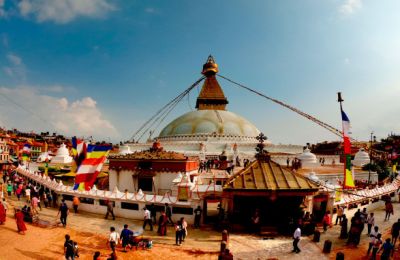
Explore Six UNESCO heritage sites and Nagarkot Sunrise - 3 days
Explore 6 of the UNESCO world heritage sites in Kathmandu Valley and embrace the sunrise over mountains, including the mighty Everest, from the Nagarkot viewpoint.
Inquire NowWhere to travel next?
Get help from our travel specialists for holiday ideas that matches your interests.
4. The Story Of Ma-Jha-Zi-Ma
According to Tibetan Mythology, a Tibetan woman named Ma-jha-zi-ma built the stupa. Ma-jha-zi-ma was an old woman who was a poultry keeper and had four sons. She asked the king of the time to grant her a small land to build a tower. With her great sacrifice, she finished the groundwork of the tower. The wealthy people were stunned to see her work.
Ashamed and fearful, they immediately asked the king to stop her, but the king refused to undo his orders, saying, "I have finished giving the order to the woman to proceed with the work. Kings must not eat their words, and I cannot undo my orders now."
And the tower was allowed to be finished. Hence the unique name "Jya Lung Kha-shor Chorten Chenpo" which translates as "Chorten of poultry fallen promise."
Recommended Read:
Places to visit in Nepal - Inside and Outside of Kathmandu Valley
Why I love Kathmandu - Allure Of The Valley of Temples
Top 10 facts about Swayambhunath Stupa
5. Names And Meanings
Did you know the meaning of its very name Boudhanath? If not, here's the meaning: “the Lord of Awakening.”
The original name of the stupa is Khasti Mahachaitya, which literally means great stupa of the dew drops. This name was given during the Panchayat era in the 1960s. It is believed that the stupa was built using the harvested water harvested from dewdrops.
6. Architecture Of The Stupa
The stupa is set on three levels of plinths in the shape of mandalas. These plinths are twenty-cornered terraced platforms on which the stupa rests. Above it is the dome, also called Kumbha, and represents water. The dome is freshly whitewashed every year.
There are 6 small Newari-style stupas on the lowest plinth of the stupa. The four-foot-high drum just below the dome is adorned with 108 stone deities. Above the drum is the whitewashed dome and Harmika that sits atop the dome.
A Harmika is a square fence that symbolizes heaven on top of the dome. It has the all-seeing eyes of Lord Buddha and a nose-like structure that is the Nepalese number one.
Above it is the 13 steps of the spires that symbolize the thirteen states of Bodhisattva’s ground for the enlightenment. And at the top is the gilded lotus canopy (also called umbrella) that represents the way of enlightenment.
In between the spires and canopy is the lotus. And the Pinnacle at the very top of the stupa is the symbol of Mt. Sumeru.
Featured Trips
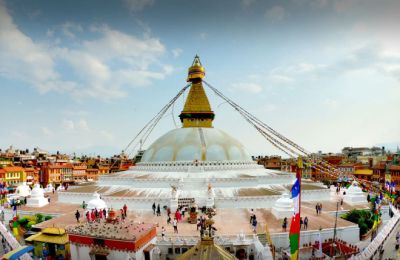
Kathmandu Heritage Tour - 1 day
Kathmandu Heritage Tour lets you explore the city’s iconic UNESCO World Heritage Sites. Walk through the medieval city and discover Kathmandu’s cultural gems.
Inquire Now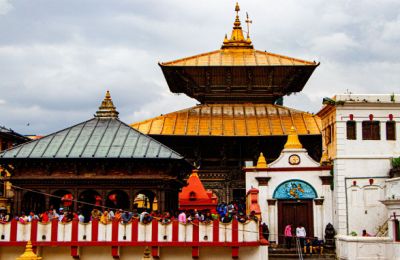
Kathmandu and Chitwan Tour - 6 days
Kathmandu and Chitwan Tour is an ideal package that allows you to experience Kathmandu and Chitwan National Park while enjoying history, nature, culture, and wildlife activities in the short 6 days
Inquire Now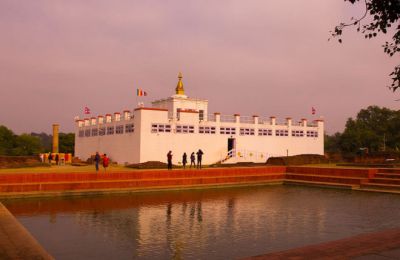
Kathmandu and Lumbini Sightseeing Tour - 6 days
In this Kathmandu and Lumbini sightseeing tour, you'll explore the cultural and religious highlights of the Kathmandu and Lumbini valleys within 6 days in Nepal
Inquire NowWhere to travel next?
Get help from our travel specialists for holiday ideas that matches your interests.
7. No Torana And Dhyani Buddhas
One unusual fact about Boudhanath Stupa is that it is devoid of Torana and 5 Dhyani Buddhas. Yes, very few people know this or have noticed it. But you can be sure of it at a quick glance of the stupa.
Just look at the Harmika above the dome, and you'll see that there's no Torana and 5 Buddhas. FYI, if you're not sure about Torana and the Dhyani Buddhas, look at the Harmika of Swayambhunath Stupa and you will get it.
8. Limewash
When repainting the dome of the stupa, limewash is used, which is a natural decorative made from natural lime and natural pigments. Usually, the monks do this job by throwing a big bucket of limewash over the dome.
A lime tank (near the main entrance) is at the stupa base for mixing water and the air-hardening lime. Saffron water is used to paint the yellow-colored lotus petal pattern on the dome; it looks like an inverted U encircling the dome's base.
9. Clockwise Circumambulation Of The Stupa
Just as you enter the stupa, the first thing you see is the massive dome and the people circumambulating the stupa.
Some people go around the stupa in the anti-clockwise direction, which is a wrong practice. You should circumambulate the stupa in the clockwise direction.
It is believed when you go clockwise, you align with the natural force. In Buddhist circumambulation, also called pradakshina, the practitioner walks clockwise around the stupa.
10. Prostration
Inside the Stupa, to the left of the main entrance, is the spot where you'll find monks in maroon-colored robes and other people prostrating on a wooden plank facing the whitewashed dome. You'll have to look down while walking through the base of the stupa to find the prostration area.
A prostration is an act of showing reverence to the Triple Gem and another sacred object. To prostrate, devotees lie down on the floor, stretching their arms in front and performing certain ritual gestures and movement.
Recommended Trips:
Kathmandu Heritage Tour
Kathmandu Cultural Tour
Nepal Buddhist Pilgrimage tour
- Written by: Puskar Rai
Updated: Mar, 10, 2022

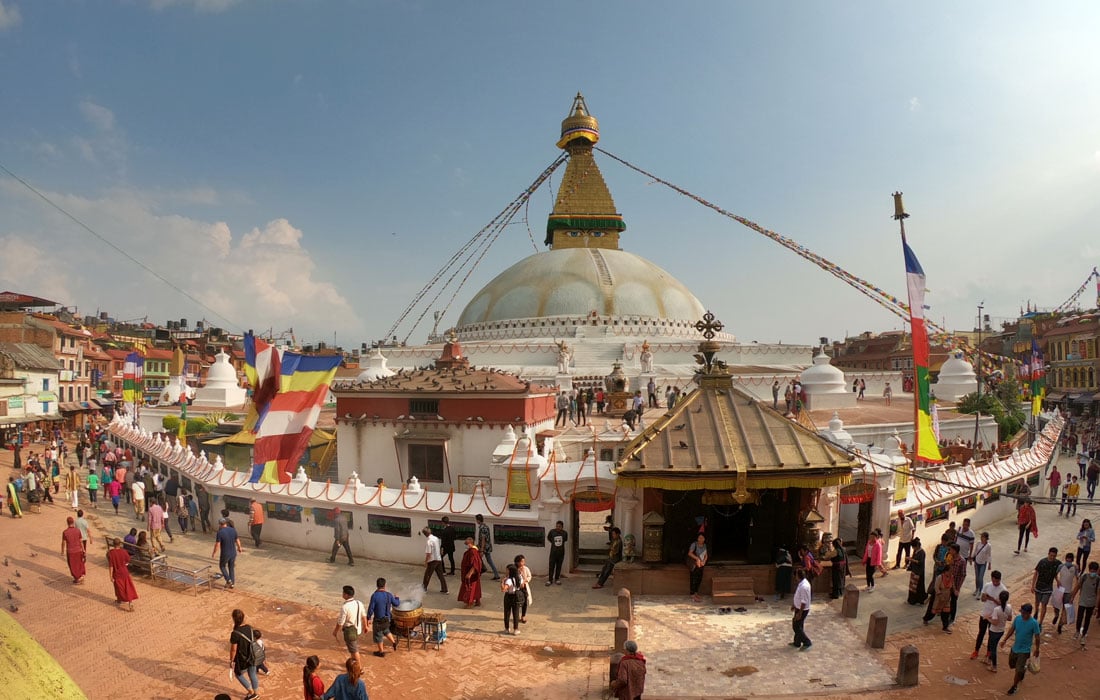

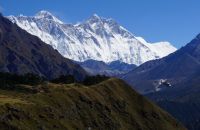
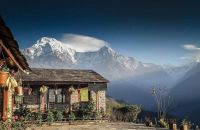
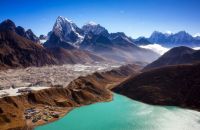
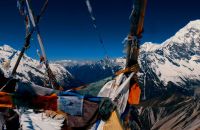
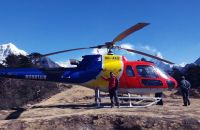
















Recent Comments